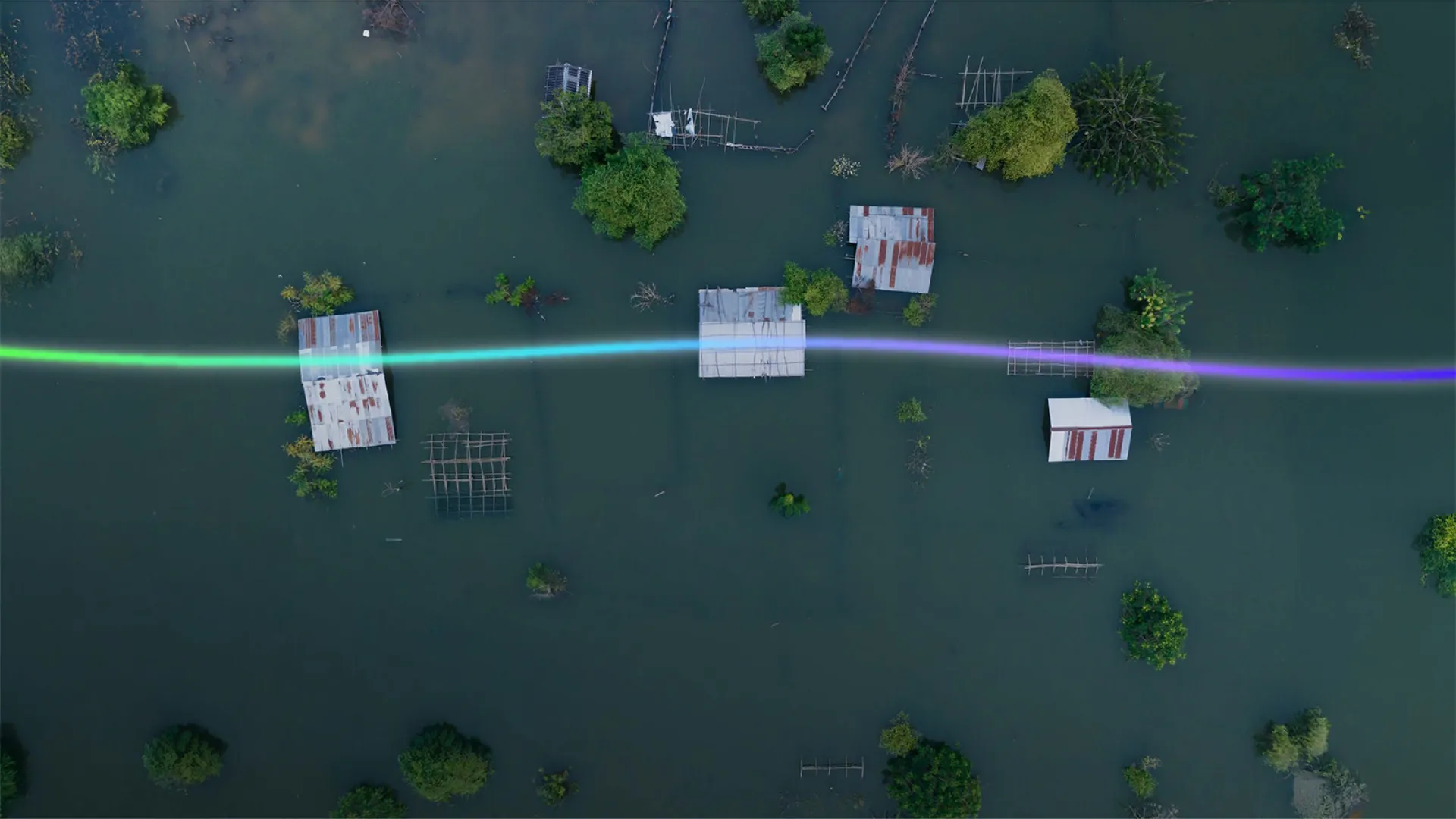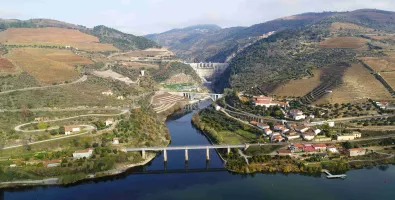
EDP Climate Adaptation and Resilience Report: shaping the energy of tomorrow
EDP faces climate change head-on, embracing mitigation, adaptation and innovation to contribute to a more resilient world. Our latest Adaptation and Resilience Report is a groundbreaking step; it’s the first time EDP has prepared and released a global report on climate adaptation, explaining how its assets are being prepared to resist and adapt to climate change in a sustainable way.
In the Climate Adaptation and Resilience Report 2025, we highlight the way we are navigating these uncertain times, with the energy transition lagging the speed the world needs. The reality of climate change is clear - global temperatures climb higher, extreme weather events challenge infrastructure, and new risks redefine the energy sector. Along with mitigation, climate adaptation is key to increasing resilience, in order to thrive as a company, supporting the energy transition.
At EDP, adaptation is not optional; it’s fundamental to our business, to our people, to the communities we impact, to our responsibility as an energy leader. We are present in 4 regional hubs that represent dozens of countries; we employ more than 12,000 people, and support many more in their families and communities - we have thousands of assets, around 90% of our energy is renewable, and we manage 391,000 kilometres of distribution and transmission lines.
All these people, all these assets, our investors, partners and clients, rely on a strong, resilient, sustainable and future-proof company. And the Climate Adaptation and Resilience Report 2025 highlights our experience, the actions and the tools being used to adapt and protect our operations, our investments and our culture.
EDP commits €12 billion in the new business plan for 2026-2028, for growth in a volatile global landscape, including €3.6 billion dedicated to strengthening network modernization in Portugal, Spain, and Brazil. And 85% of our assets already have real-time monitoring.
We have 2.5 GW of pumped storage in the hydropower share, 54% of our energy generation comes from onshore and offshore wind, and solar power grows more and more, passing 3 GW of installed capacity, with more than 470 MW of the projects - built or in construction - already including battery-based storage. At EDP, we face climate change head-on, delivering solutions on a global scale, but also impacting countries, regions and communities on a local scale.
Numbers that make a difference
renewable generation share
renewable electricity
installed capacity of renewables
distribution and transmission networks
smart meters in Iberia, 70% in Brazil by 2026
in network innovation and digitalization 2026-2028
electricity and gas customers
employees worldwide
The EDP Climate Adaptation and Resilience Report 2025 provides a reference for what we have done and what we plan to continue on doing, to improve the company’s resilience to climate change. It details how our strategy weaves innovation, major investments, and proactive risk management to meet immediate and future climate challenges.
EDP’s approach is holistic: adaptation is now becoming inseparable from mitigation. As Miguel Stilwell d’Andrade, CEO, notes in the Adaptation report, “we must promote resilience and adaptation to current circumstances and recognise the need to have adaptation practices going hand-in-hand with our mitigation effort. EDP’s strategy combines investment in renewable energy with efforts to strengthen resilience and to lower exposure to climate risks while supporting long-term operational stability. Our risk management framework identifies vulnerabilities and guides actions that reduce financial impacts and unlock new opportunities”.
Climate change has a global impact on communities and businesses. Without adaptation, many companies will face economic uncertainty, even viability, and many communities will be in peril, facing relocation.
And EDP acknowledges the need to face the challenges of climate change, keeping a strong commitment not only to ensure resilient operations, but also to transparently bring this subject to the table, promoting a collective effort to address climate change.
We experienced 8 extreme climate events in the last 12 years alone, from windstorms to wildfires, from droughts to heavy rains, with a material impact on the group. Working to enhance climate resilience is now key to continuing to lead the energy transition.
- Diversifying technologies and geographies
- Enhancing energy flexibility
- Promoting hybridization
- Developing grids automation
- Partnering to improve climate modelling
- Invest in climate-resilient infrastructures
- Adequate teams and processes
- Improve energy management
- Promote collaboration among stakeholders
EDP remains committed to assessing climate risks and assuring that the most exposed infrastructures are safeguarded through comprehensive climate adaptation plans. To support these plans, a building blocks’ structure will frame a global adaptation plan, and the initiatives in place for a time-response approach. EDP’s commitment by 2028 is clear: infrastructures exposed to material climate risks will be covered by Climate Adaptation Plans.
Embedding climate adaptation into daily operations requires internal processes to promote operational efficiency, along with innovative, forward-looking solutions shaped by both experience and continuous exploration. What we learned in the past, and what we continue to learn, place us on the right track for what we can do in the future.
Examples of adaptation opportunities:
- Flood-resilient infrastructures: The Aldaia substation in Valencia remained operational during severe flooding, thanks to climate risk-informed design.
- Extreme temperature management: Upgrades to wind turbines and thermal management systems reduce shutdowns and improve reliability.
- Water scarcity solutions: Innovative technologies like hydroscrews and turbine upgrades improve energy generation even during dry seasons.
- Material upgrades: Fibreglass poles and polymeric crossarms in Brazil’s distribution networks enhance durability and reduce maintenance.
- Nature-based solutions: Partnerships with ForestWise and reforestation projects in Portugal and Spain reduce wildfire and landslide risks.
- Digitalisation and AI: Tools like the Water Board platform and Protheus decision support system use AI and advanced analytics to optimise weather forecasts, planning and resilience.
Anticipation, innovation, and the ability to recover are essential in the coming years. However, long-term climate resilience of businesses depends on further actions, policies and stakeholders:
- Collaborative and systemic approaches. Solutions are complex and depend on many players, demanding the involvement of local authorities, civil protection, insurance companies, businesses, academia, the financial sector, and civil society.
- Support for science. To continuously evolve our knowledge and enable more informed, effective decision-making, a continuous, effective and informed scientific approach is necessary.
- Effective National Adaptation Plans (NAP). These instruments need to be actionable, time-bound and participative, with clearly identified financial resources. NAPs will play a crucial role in guiding and defining companies' strategies and actions.
True adaptation, mitigation and resilience goals are lived daily - through every project, investment, and collective effort at EDP. We invite you all to engage with the report, share insights, and contribute to our collective climate resilience, advancing to the future of the energy sector, of the planet.






